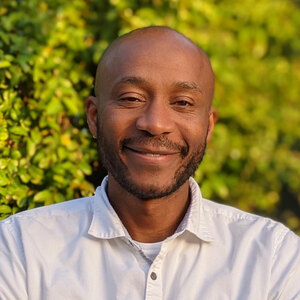 After many years of foolishly putting it off, I am finally reading Oliver O’Donovan’s classic primer on Christian ethics, Resurrection and Moral Order (2nd ed.). One of the book’s major claims is that the resurrection of Jesus is the ultimate reaffirmation of the created order. He writes:
After many years of foolishly putting it off, I am finally reading Oliver O’Donovan’s classic primer on Christian ethics, Resurrection and Moral Order (2nd ed.). One of the book’s major claims is that the resurrection of Jesus is the ultimate reaffirmation of the created order. He writes:
The resurrection of Christ, upon which Christian ethics is founded, vindicates the created order in this double sense: it redeems it and it transforms it. For the resurrection appears in the Gospels under a double aspect, as the restoration of Jesus from the dead and as his glorification at God’s right hand. . . . The important thing is not which of these two aspects of the resurrection we emphasize at any moment, but that it does properly have both aspects; origin and end are inseparably united in it. (56–57)
This contention has got me thinking about the proper uses of eschatology for forming theological or ethical judgments. One often reads in theological literature strong appeals to eschatology as a way to understand the church’s present vocation, or to move beyond perceived stalemates, or whatnot. For example, in a text I use for a theology class, the authors attempt an eschatological argument against gender-based and marriage-modeled hierarchy in the church. They argue that since there is no marriage in the age to come and the only pertinent hierarchy that will exist is between Christ and his people—both men and women—we should model our church structures accordingly. If men and women share a common call eschatologically, should they not presently? Are we not supposed to order ourselves in light of the coming realities of the kingdom?
Whatever one makes of this specific argument is somewhat beside the point. The issue that is raised for me is how eschatology should properly be used. Regarding our example: Does a supposed lack of gender-based hierarchy in the eschaton necessarily militate against such hierarchies in the church? At the very least, a response must include an acknowledgment of the “double aspect” to which O’Donovan refers. An eschatological appeal shouldn’t bypass or ride roughshod over present created realities, such as institutions and hierarchies, as it points to the transformation of such structures. O’Donovan writes:
[Christian ethics] respects the natural structures of life in the world, while looking forward to their transformation. This can be seen, for example, in the First Epistle of Peter, which starts with a general characterization of the Christian life in terms of ‘hope’, which is set ‘fully upon the grace that is coming to you at the revelation of Jesus Christ’, and then elaborates a special ethics in terms of respectful submission ‘for the Lord’s sake’ to every institution of human life, especially the institutions of government, labour and marriage. (58)
He concludes:
There is no conflict here between what might be thought of as the ‘radical’ character of the general outlook [i.e. hope] and the ‘conservatism’ of the specific counsel [i.e submission to authorities]. A hope which envisages the transformation of existing natural structures cannot consistently attack or repudiate those structures. (58)
So, what are the limits of eschatology for making theological or ethical judgments? I don’t know exactly. At the very least, I think it’s wise to consider a couple things in our application of it. First, we can’t assume that it is a simple and straightforward enterprise to apply the eschaton to present structures. Second, and more importantly, we have to ask how specifically the age to come both transforms and affirms present realities—in the world and the church—as this might help mitigate the use of eschatology to confirm what we want confirmed.
 Biola University
Biola University
.jpg)


.jpg)